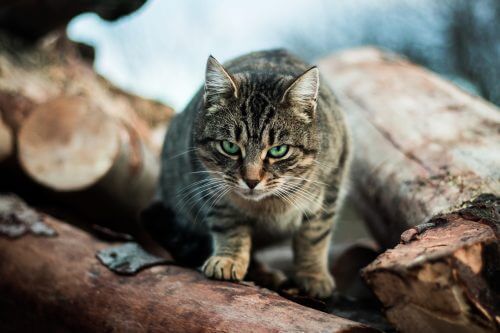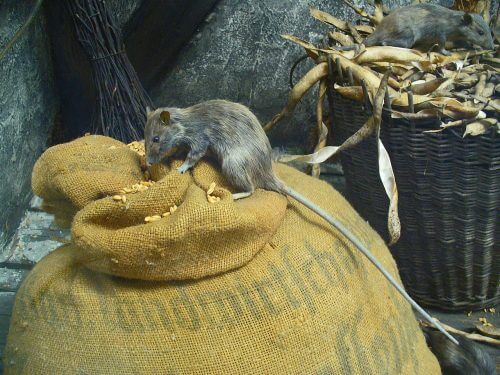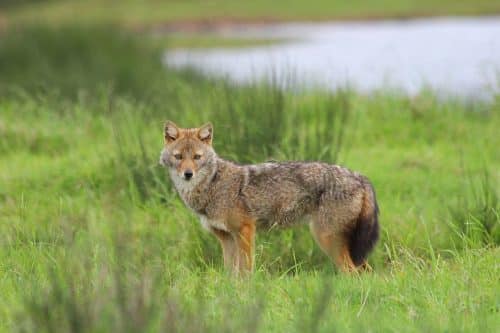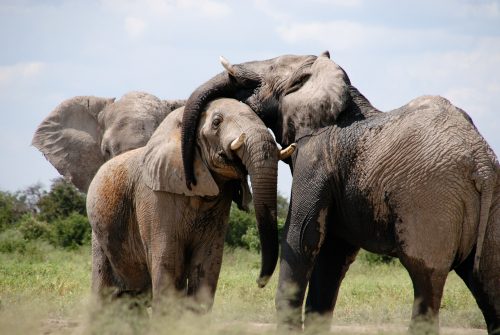In China they exterminated the sparrows and caused a plague of locusts, in England they exterminated cats and won a plague, while in Israel they killed mongooses and replaced them with snakes. When man interferes with nature it does not always end well

By Shahar Shluh, Zveta, Science and Environment News Agency
In 1883, farmers in Hawaii decided that something had to be done about the rats, which were severely damaging their sugar cane crops. They chose a solution that seemed advanced: biological control. For this purpose, they imported 72 Asian mongooses to the island to eat the rats. But they forgot one small detail: the mongooses are active during the day, the rats - at night. The rats continued to gnaw the canes, and the mongooses, which by now multiplied to thousands, caused serious damage to the animals on the island. Among other things, the local bird Nene reached the brink of extinction.
Ecosystems are complex and complicated, and even the experts do not always fully understand them. Every animal and plant in the system is related in many different ways to other creatures in the relationship of predator and prey, pollinator and pollinated, competing for food or other resources such as light, water and nesting place. If one factor is moved, there is a real fear that a devastating domino effect will result.
History shows that it is very easy to cause a catastrophic chain of events if you interfere with ecosystems without first taking a few big steps back to try to see the full picture. Some sad stories of animal extermination, which started with good intentions, show that focusing on one "interfering" factor may not only miss the mark, but also lead to much more serious consequences.
Less cats, more plagues
Today's environmentalists are concerned aboutThe negative effects of pets. But history shows a different role they play in public health. London of the mid-17th century was an overcrowded city with poor sanitary conditions, which caused repeated outbreaks of plague. One of the most well-known of them is the "Great Plague of London", an outbreak of smallpox that claimed the lives of about 100 of the city's residents between 1655 and 1666. The plague probably came from Dutch sailors who unloaded goods at the docks near the city, and the poor workers who handled the goods and lived in dilapidated buildings were probably the first focus of infection and spread of the disease.
The second suspects were the urban cats. As the word spread and panic gripped the public, the city officials ordered the killing of London's cats and dogs on the assumption that the fleas they carry were spreading the deadly bacteria. The assumption was not wrong - fleas do indeed carry the disease-causing bacteria - but the trustees of public health forgot an important factor in the equation: the rats. The fleas prefer rats over other mammals. According to the publications of the Museum of London, 40 thousand dogs and 200 thousand cats were slaughtered following the instruction. In the absence of cats, the rats multiplied at a faster rate and continued to contribute to the spread of the disease, which was only stopped by the Great Fire of London in 1666.

anti-sparrow rockets
In 1957, Mao Zedong, ruler of the People's Republic of China, announced the "Four Pests Campaign". The campaign, one of many initiated by the Communist Party in order to make China a modern, healthy, productive and economically prosperous nation, called on the public to destroy four species of animals: mosquitoes, rats, flies and sparrows. While the first three were exterminated due to their damage to the household and public health, the reason for the war on sparrows was their damage to agricultural crops. The propaganda presented the sparrows as the destroyers of the labor of the working man, an unforgivable sin in the communist atmosphere of those days. Videos shot in China at the time They show crowds of people going out into the fields equipped with long sticks, rockets, guns and drums to scare away the birds. Baskets were filled with the bird carcasses and brought to checkpoints, where those who presented a lot of loot were praised and those who did not kill enough were reprimanded. On top of that, the public, which was subject to severe company and establishment supervision, destroyed nests, broke eggs and killed sparrow chicks.
According to estimates, hundreds of millions of sparrows were killed as a result of this propaganda campaign. The operation was successful, the little birds disappeared from the fields of China, but the result was a horrific human tragedy called "The Great Famine". When the sparrows disappeared from the fields, swarms of locusts, which until then served as food for the sparrows, multiplied and spread without interruption and consumed the rice crops. China's rural population has lost a staple of their diet. According to various estimates, 30 to 45 million people died of starvation (the numerical discrepancy is probably related to the time period to which the estimates refer). It is interesting to note that the propaganda that fueled the elimination of the sparrows was backed by data and calculations that estimated that each sparrow eats 4.5 kilograms of seeds per year, and that for every million sparrows that are killed it will be possible to save enough food for 60 thousand people. Contemporary Chinese scientists say that Mao ignored scientific opinions that warned of the consequences of the operation.
Documentary video about the extermination of sparrows in China:
The war with the jackals
The far-reaching ecological mistakes did not escape Israel either. In 1964, for example, the Ministry of Agriculture began an operation to exterminate jackals in order to prevent the spread of rabies and due to the damage the jackals caused to agricultural crops grown under plastic sheeting. To kill the jackals, tens of thousands of poisoned chicks were scattered on the plastic sheets. But the Ministry of Agriculture did not take into account that not only the jackals would be tempted by the free meal, and together with them foxes, wolves, wild cats, swamp cats and mongooses were also destroyed.
The economic cost was heavy: following the steep decline in the predator population, there was a significant growth in the populations of rabbits, partridges and various rodents - all harmful to agriculture. Another cost was the overbreeding of vipers due to the absence of mongooses that prey on them. Until 1977, when the mongoose population re-stabilized, there was a sharp increase in the number of victims of bites by the venomous snakes. According to Dr. Benny Shalmon's review, the populations of wolves and jackals have not recovered since then, and now the common fox is the main predator in the country and also the main carrier of rabies.

Alan, the ecologist who killed elephants
Some of the lethal interventions are done for purely ecological reasons. One of the most famous and sad decisions in this area belongs to Allan Saybury, an ecologist, military man and ex-politician born in Rhodesia (today's Zimbabwe). Saibori, who like the rest of us wants a greener world, went to war in the desert. One of the causes of desertification is overgrazing. Savory has the wildlife in its sights and set that nature reserves that are not well managed and too large populations of large animals, especially elephants and hippopotamuses, lead to the destruction of habitats. In 1969, following Saybury's recommendation, the Zimbabwean government began a massacre of elephants that resulted in the death of 40 individuals. The operation did not bring the expected result, yes The reason for the decrease in the mass of vegetation in the area in question was probably the dry season and fires. Saybury later described the dismal recommendation as one of the most regrettable mistakes of his life.

A local success story
Dr. Noam Lider, Director of the Ecology Division in the Scientific Division of the Nature and Parks Authority, suggests looking with leniency at the historical cases presented above, since these are failures caused by a lack of knowledge. "Today", he explains, "decisions to intervene in the natural system are made after a lateral view that takes into account multiple factors and running scenarios of possible effects. Correct management of environmental interventions is especially important in a small country like Israel, where there are many interfaces between man and nature and the interventions, which are made with the aim of preserving the biological diversity and the landscape, are inevitable."
Leader provides some examples: if you want, for example, to remove an invasive species from the system, you must examine whether it has already established itself in the system or not yet. "If the species is already established, as soon as it is removed, another market is created for the system," he explains. If the invader is a pollinating insect, for example, that has pushed out the native pollinating species, what will happen if it is spoken? Who will provide the pollination services, so essential for plants?
Another example is the use made a few years ago in Israel of plant-based toxins in order to exterminate the locusts in the Negev. In terms of their toxicity, the substances were considered safe, but being non-selective they harmed all insects and not just locusts. Fortunately, the damage was relatively short-lived – since insects reproduce quickly and move quickly due to their ability to fly, the population re-stabilized in no time.

Alongside the unfortunate mistakes, there are countless examples of successful interventions in the environment. One such example is the use of hawks and falcons to control rodents in agriculture in Israel. At the heart of the project are nesting boxes for falcons and peregrine falcons placed in agricultural fields, assuming that the favorable conditions will attract the birds to the field and make them hunt the pests, thus eliminating the use of chemical poisons.
The project started in the 2008s in Sde Eliyahu and became a national project in XNUMX. The intervention, led by Prof. Yossi Leshem, is considered a success story. Why did this program succeed where other projects failed? The reasons for this are that the program was based on local species that complement each other (active breathing at night and the falcon during the day), that it was built gradually with the cooperation of researchers and professionals and with constant monitoring, and was also accompanied by advocacy, cooperation with farmers - including Jordanians and Palestinians - and supporting educational activities. The program can be an inspiration for gentle, precise and non-destructive interventions in Israeli nature.

2 תגובות
There are many examples in our small country - it's a shame that you bother to bring examples from China from decades ago when you have many examples here and now - for example the species and droids that crowd out the wild birds, the palm weevil that destroys all the canary palms in our country, the ambrosia beetle that attacks the avocado groves, the fig beetle that is already about ten years old Women who destroy all the fig trees, trees like acacia from Khilah, eat acorns that were brought as ornamental plants and crowd out the natural vegetation and more and more such "guests" who were brought here intentionally or unintentionally to our country.
In many countries, for example New Zealand, there is very strict control over the introduction of organic matter, even an apple cannot be transported through the airport, whereas here it is a celebration.
Jordanians and Palestinians are the same thing enough for propaganda